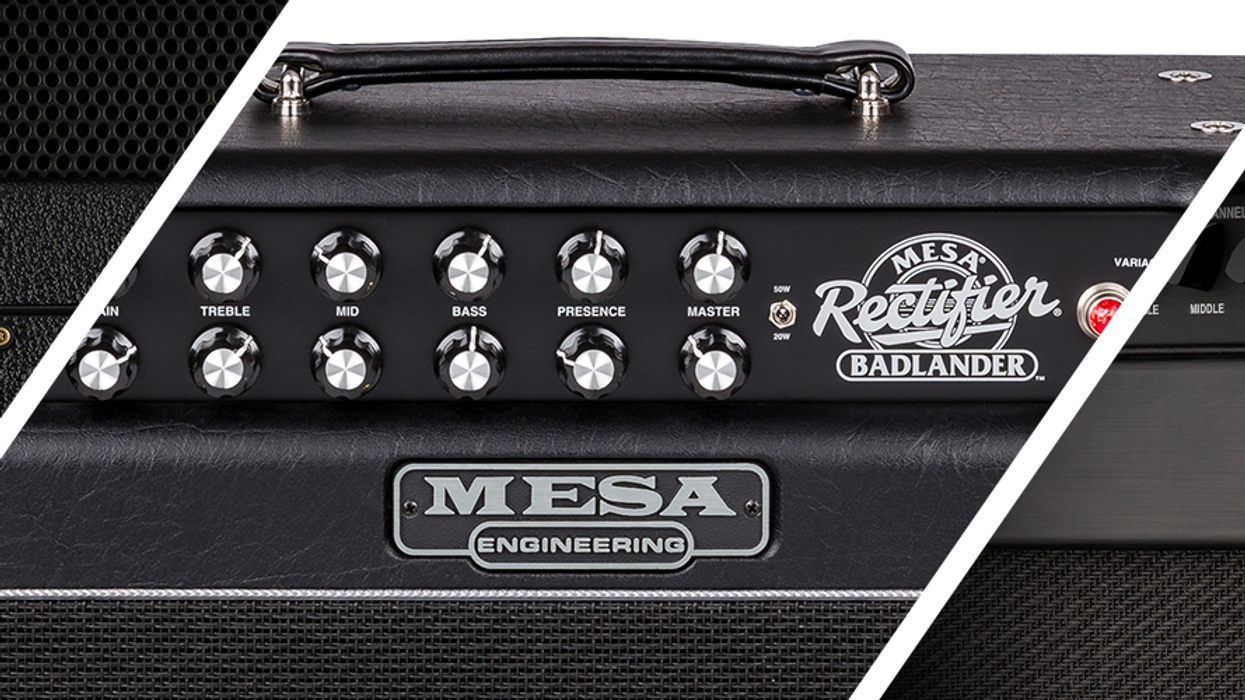London, England’s Rainger FX was one the unexpected surprises for us back at Musikmesse 2012. We met head honcho/mad scientist David Rainger, not because he had a booth, but because he was roaming the halls with his creations, enthusiastically plugging them into the rigs anyone willing and curious enough to listen. Rainger was enthusiastic, enterprising, super-smart, and maybe a bit mad—our kind of effects builder! We’ve watched Rainger’s development closely, as have the high-profile guitar-slinging rule-breakers who have fallen for his sometimes demented—but always functional—distortion devices.
Rainger’s latest creation is the Air Traffic Controller (ATC), a low-pass-filter-driven, white-noise-generating distortion capable of massive, filthy, and highly individual fuzz tones that work great in rock settings. The ATC offers a wealth of unconventional, often synth-like tones that reward and invite unorthodox musical techniques and styles.
Roger Tower, Clear the Runway Rainger always takes an irreverent and open-minded approach to his interfaces, enclosures, and other design elements. The ATC is no exception. The canted, oblique, trapezoidal enclosure is like a skewed take on Vox’s odd stomps of the early ’80s. The shape highlights one of the pedals’ most fun features: a set of lights that glows in series like runway landing lights while you play. The lights have a practical function too, helping you see the chicken-head knob for the critical peak/pitch/random control mounted on the unit’s backside.
While some control names are obscure, it’s easy to get a sense of how they work after a few minutes of tweaking. The level control is self-explanatory. Resonance is essentially a Q control for the low-pass filter—clockwise settings make the cutoff more pronounced, while counterclockwise ones blend filtered and direct signals. Air-signal mixes the output of a white noise generator with your guitar sound. Distort sets amount of fuzz.
The peak/pitch/random control, which interacts with the pedal’s low-pass filter, is one of the keys to the ATC’s unique personality. The peak setting configures the filter so that guitar volume and pick attack determine the cut-off frequency. In pitch mode, note pitch triggers the cut-off. In random mode, the cut-off frequencies vary from note to note, at times creating drifting, radio-like undercurrents.
The low-pass filter is situated in the circuit after the air-signal or mix control and the output amp, making the resonance easier to control and minimizing unwanted noise.
Alien Lines of Transmission If you’re only worked with basic fuzzes and distortions, it can be hard to know where to begin with the ATC. One of the best approaches is to start with the peak control, the level and distort at about noon, air-signal around three o’ clock, and the resonance control at its lowest possible setting. This generates a grinding, skanky, but harmonically complex fuzz with a hint of gating and filtering, perfect for menacing garage punk and Stooges riffs. It’s a sound free enough from filtered signal to work as the only fuzz in your line, provided you like your distortion pretty gritty.
From here you can develop a feel for how significantly—and interactively—the controls re-shape your tone. Give the resonance a quarter-turn, and the filter and white noise get a foothold. It sounds like a very deep, vowel-like phaser working in the high-mid frequencies. Move the resonance and air-signal to noon, however, and that phasey, filtered wash becomes a hot, metallic desert wind assaulting a tin shack—a pretty cool texture to have soaring along with your fuzz signal, especially if you’re into industrial sounds or Sonic Youth’s more brutal Mu-Tron Vol-Wah tones. The real beauty of the peak setting is the way it interacts with picking dynamics and your volume control. Rolling back your volume creates progressively more vowel- or wah-like filter effects, perfect for funk leads.
Ratings
Pros:
A wealth of bizarre synth- and sci-fi-style textures. Highly interactive and variable controls. Great, aggressive base distortion tone. Practical, cool-looking form factor and layout.
Cons:
A touch expensive.
Tones:
Ease of Use:
Build/Design:
Value:
Street:
$299
Rainger FX
raingerfx.com
The pitch setting interacts less with your picking dynamics and volume, though you experience interesting filter shifts as you move around the fretboard. Some notes ring virtually clear, while others spawn grotesque doppelgangers. The random setting, meanwhile, can provide a lonely, lost-in-space radio signal feel to quieter chord passages and clean leads, provided you keep guitar mix and resonance in their higher ranges. Crank the distortion, and it becomes the uncontrollable Mr. Hyde to your distorted tone’s Dr Jekyll. These are not tones for the faint of heart, or players looking to cop fluid, silky Eric Johnson clean tones.
The white noise generator can be tricky to manage at first. Rainger did a great job keeping the noise and guitar out of each others’ way, which makes the pedal much more functional than it might have been. Some settings, though, could benefit from a more interwoven feel. Interestingly, some of the coolest white-noise applications occur when you crank the distort control and roll back the resonance almost completely. Here lurks the elusive fuzz-in-wind-whipped-blizzard grind of the Jesus and Mary Chain’s Psychocandy LP. It makes any punky rhythm track sound like a Sahara-sandblasted slab of psychedelic haze.
The ATC also works in fascinating ways with other time-based and modulation effects. It sounds great through a slow phase or tremolo setting. And routing those ghostly radio-static type effects through long-feedback delay can be positively haunting.
The Verdict Obviously, the Air Traffic Controller is built for guitarists who like to explore the outer limits. While you can get uniquely gnashing distortion that’s killer for slash-and-burn riffing, the pedal seems designed to probe weirder realms. It gives experimentally minded players the tools to create standout leads, bizarro hooks, and sci-fi sound beds and overdubs. It may be a bit expensive for the casually curious, but it’s a fantastic studio tool. We suspect many intrepid players will find a place for this maniacal little machine in their rigs.








![Rig Rundown: Russian Circles’ Mike Sullivan [2025]](https://www.premierguitar.com/media-library/youtube.jpg?id=62303631&width=1245&height=700&quality=70&coordinates=0%2C0%2C0%2C0)

















